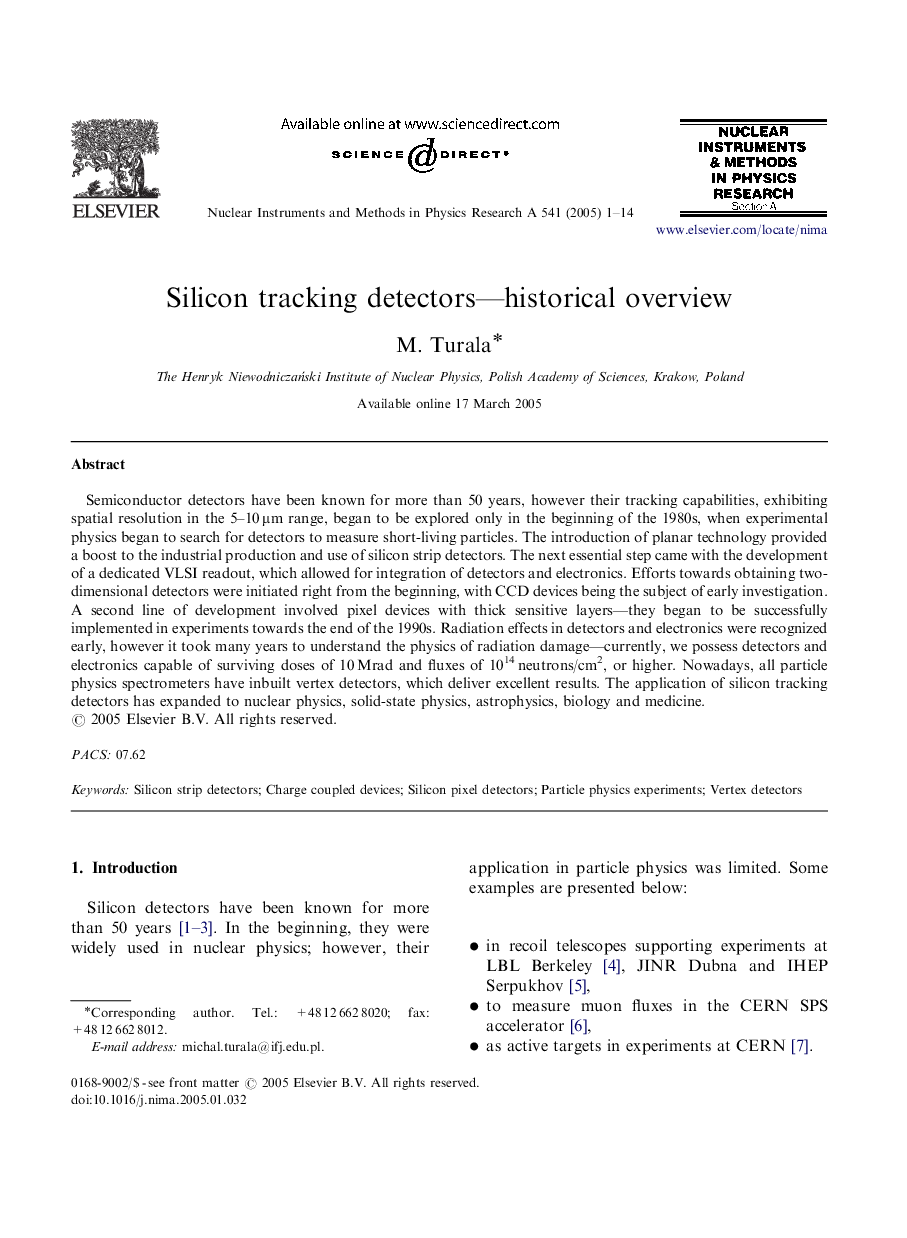| کد مقاله | کد نشریه | سال انتشار | مقاله انگلیسی | نسخه تمام متن |
|---|---|---|---|---|
| 9845622 | 1526517 | 2005 | 14 صفحه PDF | دانلود رایگان |
عنوان انگلیسی مقاله ISI
Silicon tracking detectors-historical overview
دانلود مقاله + سفارش ترجمه
دانلود مقاله ISI انگلیسی
رایگان برای ایرانیان
کلمات کلیدی
موضوعات مرتبط
مهندسی و علوم پایه
فیزیک و نجوم
ابزار دقیق
پیش نمایش صفحه اول مقاله

چکیده انگلیسی
Semiconductor detectors have been known for more than 50 years, however their tracking capabilities, exhibiting spatial resolution in the 5-10 μm range, began to be explored only in the beginning of the 1980s, when experimental physics began to search for detectors to measure short-living particles. The introduction of planar technology provided a boost to the industrial production and use of silicon strip detectors. The next essential step came with the development of a dedicated VLSI readout, which allowed for integration of detectors and electronics. Efforts towards obtaining two-dimensional detectors were initiated right from the beginning, with CCD devices being the subject of early investigation. A second line of development involved pixel devices with thick sensitive layers-they began to be successfully implemented in experiments towards the end of the 1990s. Radiation effects in detectors and electronics were recognized early, however it took many years to understand the physics of radiation damage-currently, we possess detectors and electronics capable of surviving doses of 10 Mrad and fluxes of 1014 neutrons/cm2, or higher. Nowadays, all particle physics spectrometers have inbuilt vertex detectors, which deliver excellent results. The application of silicon tracking detectors has expanded to nuclear physics, solid-state physics, astrophysics, biology and medicine.
ناشر
Database: Elsevier - ScienceDirect (ساینس دایرکت)
Journal: Nuclear Instruments and Methods in Physics Research Section A: Accelerators, Spectrometers, Detectors and Associated Equipment - Volume 541, Issues 1â2, 1 April 2005, Pages 1-14
Journal: Nuclear Instruments and Methods in Physics Research Section A: Accelerators, Spectrometers, Detectors and Associated Equipment - Volume 541, Issues 1â2, 1 April 2005, Pages 1-14
نویسندگان
M. Turala,